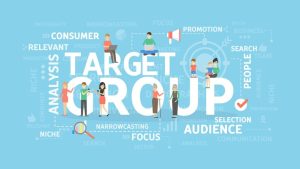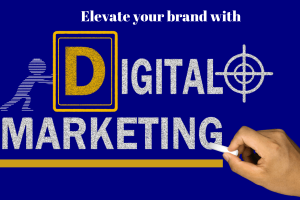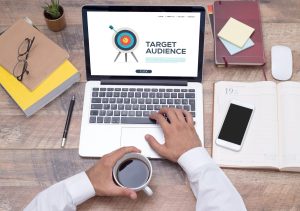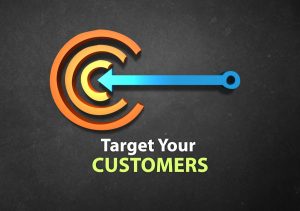Understanding your Target Audience: A Comprehensive Guide

Introduction
I have a friend who is a real estate developer specializing in luxury properties.
One day, I asked her, ‘Between having the phone contacts of university students and lecturers, which would be more useful to you?’
She replied, ‘It depends.’
‘Which of these groups has the power to buy luxury real estate? That’s the one whose contacts I would need!’ she said.
I understood her reasoning, knowing that some students are wealthy, even during their studies.
You see, she knew her target audience!”
It’s all about knowing who has the purchasing power.
What is a target audience?
Your target audience is the specific group of people who are most likely to be interested in buying real estate.
These could include investors who want to invest in landed properties, someone who wants to buy a family house, a farmer who wants to buy agricultural land, the list can go on.
These are the folks who will find the most value in your product. Think of them as your ideal customers.
What Defines A Target Audience?
A target audience is defined by certain characteristics they share.
These can include age, gender, location, income level, education, interests, and even lifestyle choices. For example, if you’re selling high-end athletic gear, your target audience might be young adults who are fitness enthusiasts and have disposable income.

Understanding your target audience is crucial for any business. It allows you to create marketing messages that resonate with them.
Instead of trying to reach everyone, you focus your efforts on the people who are most likely to buy from you. This makes your marketing more effective and cost-efficient.
To identify your target audience, you can start by analyzing your current customers.
Look at who is already buying from you and see what common traits they share. You can also use market research tools and surveys to gather more information.
Once you know who your target audience is, you can tailor your marketing strategies to meet their specific needs and preferences.
This could involve creating targeted ads, designing products that cater to their interests, or using social media platforms they frequent.
In short, a target audience is the group of people who are most likely to connect with your brand. Knowing who they are helps you reach them more effectively and grow your business.
Why Knowing Your Target Audience Matters
Running a business? One of the smartest moves you can make is to understand your target audience. Basically, this means knowing who your ideal customers are. It can really change the game for your branding and marketing efforts.
Here are some benefits of knowing your target audience:
Shape a Strong Brand
Knowing your target audience helps you create a brand that truly resonates with them. And in creating your website, you’ll be able to communicate your brand message more effectively.
By aligning your brand with what your audience values, you can make sure it speaks to them in a meaningful way.
Avoid Missteps in Marketing
Without a clear understanding of your target audience, your marketing efforts can become scattered and ineffective. And you will not be able to create a digital marketing plan for your business.
This can lead to messages that don’t resonate and could even attract negative attention. Knowing your audience keeps your marketing focused and relevant
Attract the Right Customers

Identifying your target audience makes it easier to attract new customers.
By tailoring your messages to their interests and preferences, you can draw in people who are genuinely interested in what you offer.
Enhance Customer Experience
Building your brand with a clear audience in mind means you can meet their expectations more effectively.
When customers feel understood and valued, they’re happier with your brand, leading to better relationships and increased satisfaction.
Design Smart Marketing Campaigns
When you understand your audience, you can develop marketing strategies that hit the mark.
You’ll know what messages will resonate, what tone to use, and which platforms they prefer. This makes your marketing efforts much more effective.

Build Customer Loyalty
Happy customers are more likely to stick around.
When your audience feels connected to your brand, they’re more likely to remain loyal and even recommend your business to others.
Word-of-mouth referrals can be a powerful way to grow your customer base.
Types of target audiences

Understanding your target audience is crucial for any business. But did you know there are different types of target audiences? Let’s break it down in a simple way.
1. Demographic Target Audience
This group is defined by basic characteristics like age, gender, income, education, and occupation.
For instance, if you’re selling luxury watches, you might target high-income professionals. Or, if you’re offering online courses, you might aim at college students or young professionals looking to upgrade their skills.
2. Geographic Target Audience
This audience is based on location. It can be as broad as a country or as specific as a neighborhood.
If you have a local business, like a restaurant or a retail shop, targeting people in your immediate area makes the most sense.
On the other hand, if you’re an online retailer, you might target different regions based on shipping capabilities or regional preferences.

Let me use a practical example, I reside in Lagos Nigeria, on the Island precisely.
I made an observation, I discovered that the majority of the people that live around Lekki Phase 1, Chevron, and Ikoyi are wealthier than the people that live in Ibeju-Lekki.
So if I run a real estate business and I want to sell a house that’s valued USD 500,000, would it make sense for me to go to Ibeju-Lekki for a marketing outreach?
Certainly not
My ideal clients do not reside there!
I would rather focus my marketing outreach on Lekki Phase 1, Ikoyi, Chevron, and the environs.
I hope this is clear
3. Psychographic Target Audience
Psychographics go beyond basic demographics to look at lifestyle, values, interests, and attitudes.
For example, a brand selling eco-friendly products might target environmentally conscious consumers who value sustainability.
This type of targeting helps create deeper connections because you’re aligning with your audience’s beliefs and passions.
4. Behavioral Target Audience
This type focuses on consumer behavior, such as purchasing habits, brand loyalty, and product usage.
If you notice certain customers frequently buy from you or always choose your brand over competitors, they fall into this category.
Understanding these behaviors can help tailor your marketing strategies to encourage repeat business or foster brand loyalty.
5. Benefit-Sought Target Audience
These are customers looking for specific benefits from a product or service.
For instance, someone buying a smartphone might prioritize camera quality, while another person might focus on battery life.
By identifying what benefits your audience seeks, you can highlight these features in your marketing to attract the right buyers
Three steps to finding your target audience
Finding your target audience is essential for the success of your business.
But how do you actually do it? Let’s walk through three simple steps to help you identify the people who are most likely to love what you offer.
- Determine the characteristics of your products or services
- Research your market
- Create your buyer persona
Let’s look at them in detail
1. Determine the Characteristics of Your Products or Services
First things first, you need to understand what you’re selling inside and out.
Ask yourself some basic questions: What problems does your product or service solve?
What are its key features? How does it benefit the user?
For example, if you’re selling a high-quality yoga mat, some of its characteristics might be durability, eco-friendliness, and comfort.
The benefits could include improved performance during yoga sessions and reduced environmental impact.
Understanding these characteristics helps you see who would benefit most from your product.
In our yoga mat example, potential customers could be eco-conscious individuals who practice yoga regularly.
2. Research Your Market
Once you know the ins and outs of your product, it’s time to look at the market.
This involves understanding the broader landscape of your industry and identifying trends and competitors.
Start by looking at your competitors. Who are they targeting?
What are their strengths and weaknesses? This can give you a clearer picture of potential gaps in the market that your product can fill.
Use tools like surveys, social media, and market reports to gather data about potential customers.
Pay attention to demographic information (age, gender, location), psychographic details (interests, values), and behavioral patterns (buying habits, brand loyalty).
For instance, if market research shows a growing interest in sustainable products, and you have an eco-friendly yoga mat, this trend is a good sign that your product is in demand.
3. Create Your Buyer Persona
With all the information gathered, it’s time to create your buyer persona.
A Buyer Persona is a fictional character that represents your ideal customer.
This persona is based on real data about customer demographics, behaviors, and motivations.
Start by giving your persona a name, age, and background.

For example, you might create “Eco Emily,” a 30-year-old yoga instructor who values sustainability and leads a healthy lifestyle.
Detail her interests, daily routine, and the challenges she faces that your product can solve.
Including specific details makes your persona feel real and helps you tailor your marketing strategies effectively.
Think about where Emily spends her time online, what kind of content she consumes, and what influences her purchasing decisions.
Does she follow eco-friendly influencers on Instagram? Does she read health and wellness blogs? Use this information to guide your marketing efforts.
Finding your target audience is a crucial step for any business.
By determining the characteristics of your products or services, researching your market, and creating a detailed buyer persona, you can connect with the people who are most likely to become loyal customers.
This focused approach not only improves your marketing efforts but also helps your business grow more effectively.
Target Audience Examples
Understanding your target audience is essential for any business, but what does that actually look like in practice?
Let’s dive into some examples of target audiences for different types of businesses.

Smerise Digitals
First let’s start with our company, Smerise. Smerise Digitals is a digital marketing agency offering SEO Content writing services. Our target audience might be;
Demographics:
Small to medium-sized business owners aged 30-50, both male and female.
Geographics:
Urban and suburban areas with a high concentration of businesses looking to improve their online presence.
Psychographics:
Business owners who understand the importance of online visibility and are looking for ways to boost their search engine rankings and create engaging content.
Behavioral:
Entrepreneurs and marketing managers who have tried basic online marketing strategies but are seeking professional help to achieve better results.
They regularly read industry blogs, attend webinars, and are active on LinkedIn.
This audience values effective digital strategies and quality content to drive traffic and engagement.
At Smerise, our marketing efforts highlight how Smerise Digitals can enhance their online visibility with expert SEO and compelling content tailored to their business needs.
Sujimotor
A luxury real estate company in Lagos, Nigeria, their target audience might be:
Demographics:
High-net-worth individuals aged 35-60, both male and female.
Geographics:
Affluent neighborhoods in Lagos and expatriates looking to invest in luxury properties in the city.
Psychographics:
Individuals who value exclusivity, are interested in upscale living, and seek high-quality investments.
They are likely to be successful professionals, business executives, or international investors.
Behavioral:
Prospective buyers who frequently search for high-end properties, follow luxury lifestyle trends, and attend real estate expos or property investment seminars.
This audience prioritizes luxury, location, and high-end amenities.
Your marketing should emphasize Sujimotor’s exclusive properties, top-notch amenities, and personalized service.
Showcasing stunning property visuals, client testimonials, and highlighting the unique benefits of living in Lagos’s upscale areas can effectively attract this audience.
Fitness App:
For a fitness app, the target audience might include:
Demographics:
Adults aged 18-35, both male and female.
Geographics:
Urban areas where people might have less time for gym visits.
Psychographics:
Health-conscious individuals who enjoy tracking their progress and are motivated by personal fitness goals.
Behavioral:
People who use smartphones frequently, have a history of downloading health and fitness apps, and are likely to engage with social media fitness communities.
This audience values convenience, tech-savviness, and staying fit.
Your marketing might focus on how the app fits into a busy lifestyle and helps users achieve their fitness goals efficiently.
Organic Baby Food Brand:
For an organic baby food brand, the target audience might be:
Demographics:
Parents aged 25-40, primarily mothers.
Geographics:
Suburban and urban areas with access to grocery stores that stock organic products.
Psychographics
Parents who are health-conscious, environmentally aware, and willing to pay a premium for organic products.
Behavioral:
Parents who research and purchase organic products, follow parenting blogs, and participate in online parenting forums.
This audience is concerned with their children’s health and environmental sustainability.
Your marketing could highlight the nutritional benefits of your baby food and your commitment to sustainable farming practices.
Online Learning Platform:
For an online learning platform, the target audience could be:
Demographics:
Adults aged 22-45, both male and female.
Geographics
Anywhere with internet access, but often targeting regions with high educational aspirations.
Psychographics
Individuals who are career-focused, value continuous learning, and are tech-savvy.
Behavioral:
People who have previously taken online courses, are active on professional networking sites like LinkedIn, and regularly seek out new skills.
This audience is eager to advance their careers and values flexibility in learning.
Your marketing might focus on the variety of courses available, the platform’s convenience, and the potential for career advancement.
This audience values healthy eating, sustainability, and ethical food choices.
Your marketing could highlight the restaurant’s commitment to fresh, locally-sourced ingredients, and its innovative vegan menu.
Conclusion:
These examples illustrate how different businesses can identify and define their target audiences.
By understanding the specific characteristics of your ideal customers, you can create tailored marketing strategies that resonate with them.
This focused approach not only attracts the right people but also fosters loyalty and drives growth for your business.
Having difficulty identifying your target audience? We can help!

